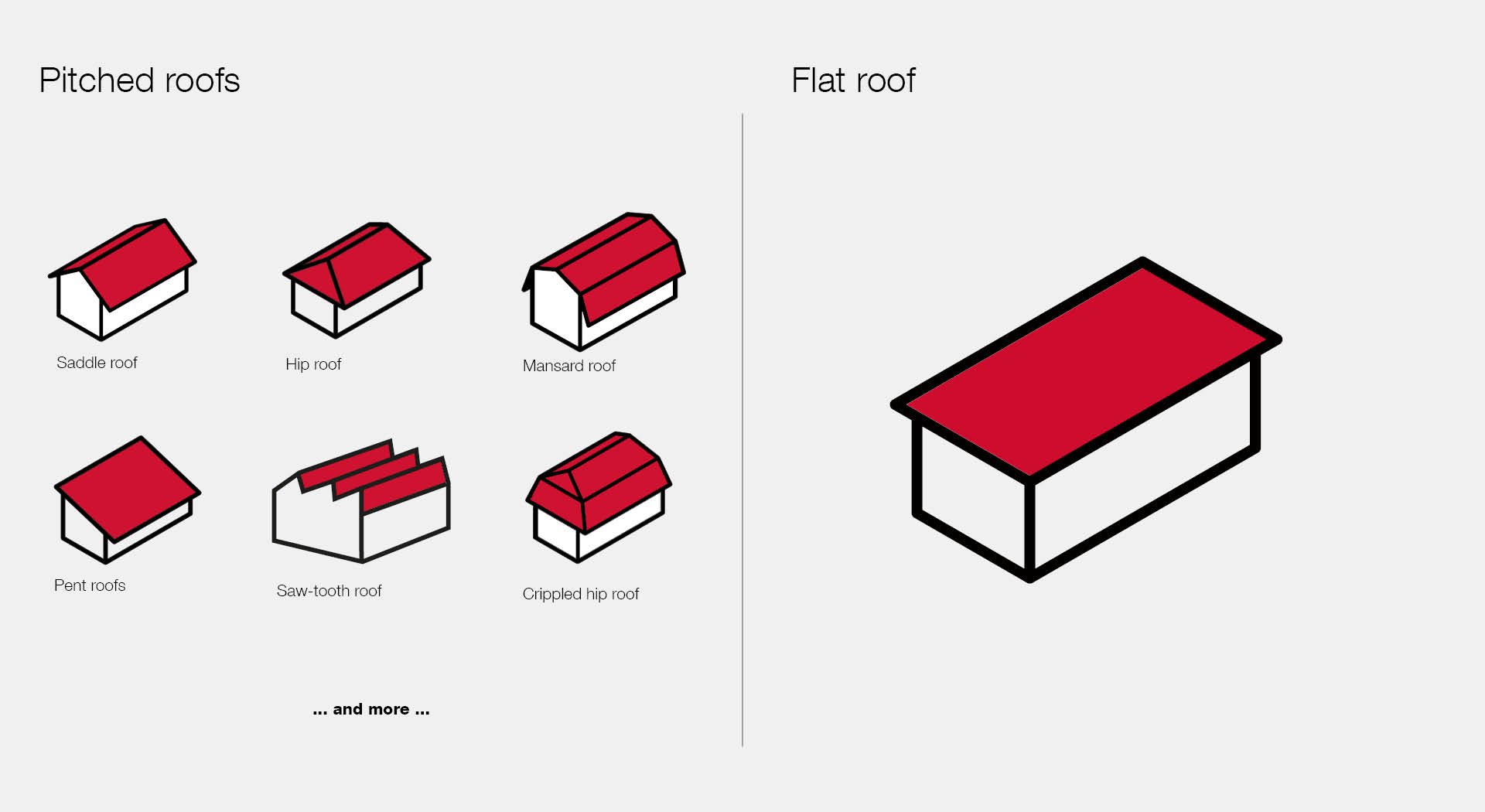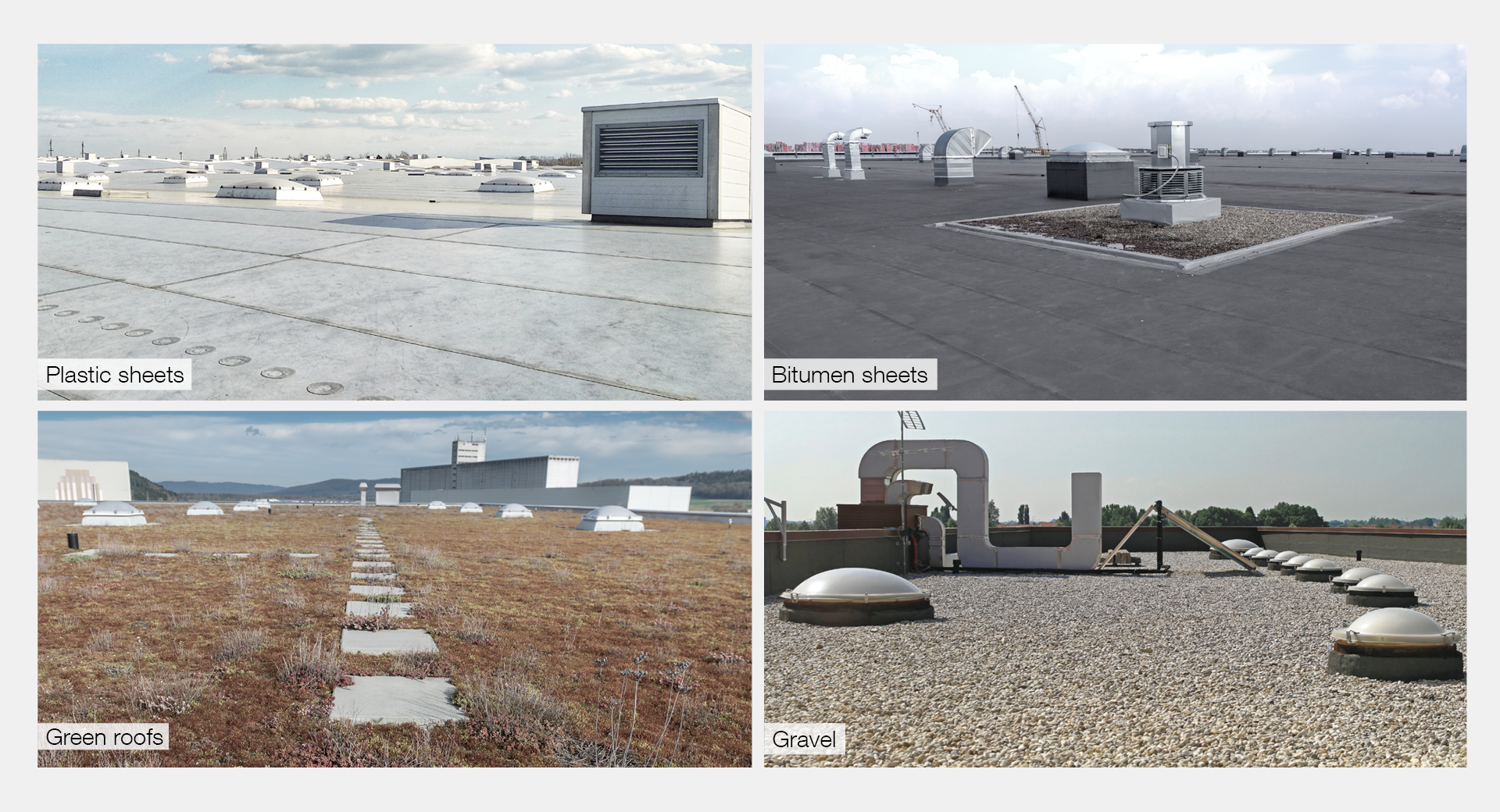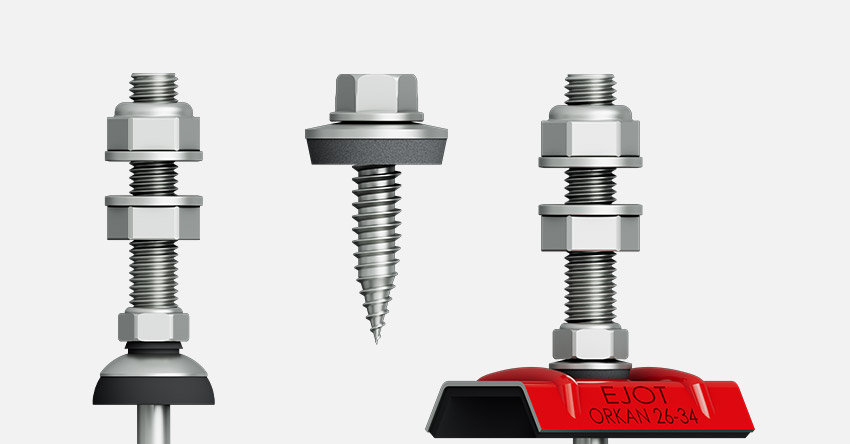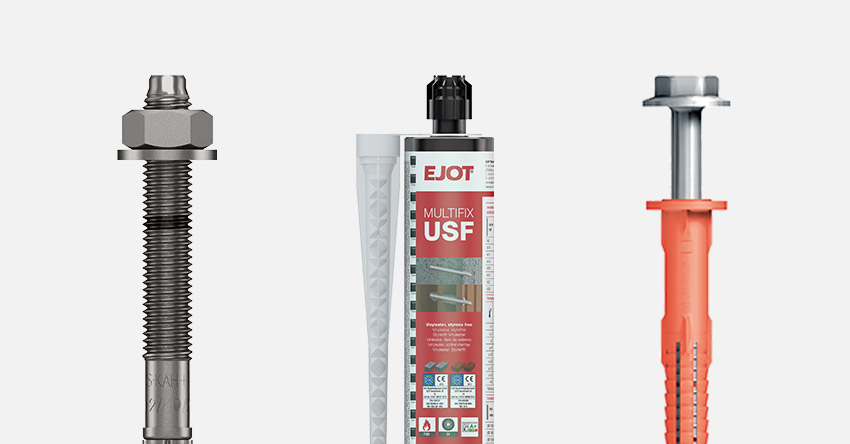Roof-mounted or in open spaces? What are the key points to consider?
Solar Guidebook – Part 2
Most solar installations are currently located on roof surfaces and in open spaces. This guide discusses the most common roof shapes and the basic issues that need to be considered when planning a solar installation. We also present options for installing ground-mounted solar installations in open spaces.
There are various factors which have an impact on the choice of the optimum mounting system. Firstly, it is important to clarify what type of roof it is. Here, a basic distinction is made between roofs with roof covering and roofs with roof sealing. With a roof covering, the roofing consists of individual laid components. The roof covering is not completely watertight, but merely drains off the water. The standard roof pitch starts at 22 degrees and can be designed in various shapes. In this case, we refer to a pitched roof.
On roofs with roof sealing, the roofing membrane is seamlessly sealed with strip-shaped materials and is therefore waterproof. This is normally done on roofs with a low slope, i.e. a flat roof.
Solar on the roof
From carports to private homes to large industrial buildings, solar installations on a roof are probably the classic solar application. But how does the solar system get onto the roof, and how is it guaranteed to be securely fastened there for several decades? To answer these questions, we first need to examine some basic issues.There are various factors which have an impact on the choice of the optimum mounting system. Firstly, it is important to clarify what type of roof it is. Here, a basic distinction is made between roofs with roof covering and roofs with roof sealing. With a roof covering, the roofing consists of individual laid components. The roof covering is not completely watertight, but merely drains off the water. The standard roof pitch starts at 22 degrees and can be designed in various shapes. In this case, we refer to a pitched roof.
On roofs with roof sealing, the roofing membrane is seamlessly sealed with strip-shaped materials and is therefore waterproof. This is normally done on roofs with a low slope, i.e. a flat roof.
There are numerous options for installing a roof covering or roof sealing. Common examples of a roof covering are:
- Trapezoidal / corrugated profile sheets: steel or aluminium sheets which are primarily used for industrial or factory buildings, but can also be found on carports, for example.
- Sandwich panels: composite elements which consist of two metallic layers. The two metal layers are connected with an insulating material.
- Corrugated fibre cement sheets: predominantly used for agricultural and industrial buildings. Fibre cement is a composite material which is made of cement and reinforcement fibres. These corrugated fibre cement sheets are still often associated with the harmful substance asbestos. However, fibre cement is no longer made with asbestos fibres today, since it is prohibited. Nevertheless, there is still the possibility of encountering fibre cement panels in existing buildings that are contaminated with asbestos.
Due to their format, the three roof covering variants listed here are capable of covering large areas efficiently and quickly. For residential buildings, however, the above-mentioned versions tend to be avoided. Asphalt shingles (mainly outside Germany), classic tiles, concrete roofing tiles or even fold roofing are normally used for this application.
Examples of roof sealing are:
- Bitumen or plastic roofing membranes: these are applied to the roof, sealed by bonding or welding, and most are fastened mechanically if necessary. After the roof has been sealed with bitumen or plastic membranes and the roofing membrane has not been fastened mechanically, it is also possible to secure it with roof greening or ballasting, for example with gravel.
The roofs are sealed with bitumen sheets or plastic films by gluing or welding. Additional protection can be provided by a green roof or gravel.
All these different roof covering and roof sealing options have an influence on the solar mounting systems and the required fastening elements.
In order to choose the correct mounting system and fastening element, the following aspects and questions have to be considered:
Solar installations and the corresponding mounting systems are exposed to various loads 365 days a year. From storms, high temperatures in summer to frost and snowfall in winter, the systems must remain functional and above all securely mounted. Increasingly extreme climate events must be taken into account at this point. Green roofs must also be taken into account in the structural design of the building. In Europe, the standards EN 1991-1-3 "Actions on structures: snow loads" and EN 1991-1-4 "Actions on structures: wind loads" serve as the main basis for determining the structural requirements for the mounting system.
The relevance of fastening elements must never be underestimated. The connecting link between the installation and the building is exposed to very high, cyclic loading and is therefore as essential as the tyres on a vehicle, which are intended to maintain a connection to the road surface. Failure of the fastening elements can cause a total failure, damage to the roof or building and even personal injury. Leaky points in the fastening elements are cost-intensive, and repairing them causes reduced yields.
There are two basic options for fastening the mounting systems for ground-mounted systems:
Option 1 is to fix the mounting substructure directly into the ground. This involves ramming steel girders into the ground.
Option 2 is to fix the mounting substructure to concrete foundations. For this purpose, the substructures are anchored in the concrete foundations. In addition, it is also possible to use mounting troughs for open-land systems, which we have already become familiar with in the area of ballasting on flat roofs. Depending on the substrate and type of mounting, various EJOT products can be used to anchor the frames to the foundations, e.g. SDF-KB universal anchors with stainless steel screw, the BA-E Plus through bolt or anchor rods in connection with injection systems. EJOT offers a range of screws for joining the metal components to each other. Depending on whether aluminium or steel profiles are involved, our application technology department will determine the most suitable fastening element for you.
In order to choose the correct mounting system and fastening element, the following aspects and questions have to be considered:
- What type of roof and roof covering/roof sealing is it?
- Which type of solar panel or solar collector is used? Both the weight and the format play an important role here.
- Which loads and weather conditions prevail where the system is to be installed?
Solar installations and the corresponding mounting systems are exposed to various loads 365 days a year. From storms, high temperatures in summer to frost and snowfall in winter, the systems must remain functional and above all securely mounted. Increasingly extreme climate events must be taken into account at this point. Green roofs must also be taken into account in the structural design of the building. In Europe, the standards EN 1991-1-3 "Actions on structures: snow loads" and EN 1991-1-4 "Actions on structures: wind loads" serve as the main basis for determining the structural requirements for the mounting system.
The relevance of fastening elements must never be underestimated. The connecting link between the installation and the building is exposed to very high, cyclic loading and is therefore as essential as the tyres on a vehicle, which are intended to maintain a connection to the road surface. Failure of the fastening elements can cause a total failure, damage to the roof or building and even personal injury. Leaky points in the fastening elements are cost-intensive, and repairing them causes reduced yields.
Ground-mounted solar in open spaces
Another possibility of generating solar energy is the construction of ground-mounted systems, known as solar parks. Ground-mounted systems can be installed on a wide variety of terrains. Large, flat surfaces are especially well-suited, but areas with significant height variations, for instance, which might not have any other practical use, are also appropriate.There are two basic options for fastening the mounting systems for ground-mounted systems:
Option 1 is to fix the mounting substructure directly into the ground. This involves ramming steel girders into the ground.
Option 2 is to fix the mounting substructure to concrete foundations. For this purpose, the substructures are anchored in the concrete foundations. In addition, it is also possible to use mounting troughs for open-land systems, which we have already become familiar with in the area of ballasting on flat roofs. Depending on the substrate and type of mounting, various EJOT products can be used to anchor the frames to the foundations, e.g. SDF-KB universal anchors with stainless steel screw, the BA-E Plus through bolt or anchor rods in connection with injection systems. EJOT offers a range of screws for joining the metal components to each other. Depending on whether aluminium or steel profiles are involved, our application technology department will determine the most suitable fastening element for you.
The next part of the solar guidebook deals in detail with roof-mounted solar installations. Using two common installation examples for a pitched roof and a flat roof, we will discuss the specific details that need to be taken into account when planning and assembling a solar installation.







